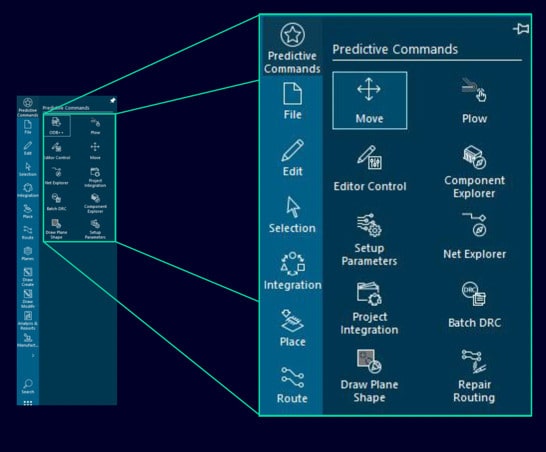Electronic systems design is filled with a wide range of tools used across IC packaging design, multi-board systems, design creation, physical implementation, electro-mechanical co-design, simulation & analysis, and new product introduction. Siemens has been offering tools in this flow for many years now, so I was able to meet by video with David Wiens, Product Marketing Manager to get briefed on their next generation release. The following three EDA tools have a new, unified GUI, along with cloud connectivity and AI smarts:
- Xpedition – electronics system design for enterprise use
- HyperLynx – high-speed system analysis and verification
- PADS Professional – low-cost, integrated PCB design
The vision at Siemens is to enable integrated, model-based system engineering, so that teams of engineers working across the multiple domains of software, electrical, electronics and mechanical can collaborate throughout the design process. Industry trends reveal a workforce in transition, with a general shortage of engineers, mass electrification of industrial products, and volatility in the supply chain across the globe. We are now in a new era where AI techniques are being applied to the electronic design process, the cloud is used to connect the work of teams, and using EDA tools through intuitive GUIs improves productivity.
Next Generation
Across the new release of Xpedition, HyperLynx and PADS Professional tools you quickly notice the consistent GUI, which has a modern look using more icons, arranged in groups based on function. Engineers will experience a short learning curve, making them more productive across the flow of these tools. Users can personalize how their icons are arranged, or even opt to go back to the classic look.

As an engineer is using these tools there are AI-infused, predictive commands appearing in the menu, based on the patterns. Each customer will see their own predictive commands, based on their tool usage, and they can have an expert train their own model and share that within an organization. Engineers can also use natural language to find new components for their system design. Simulations are optimized to use predictive selection, so a design can be optimized without resorting to brute-force simulations across a large number of permutations, allowing you to explore the design space in a reasonable amount of time. Doing SI/PI analysis on a large system can now be run overnight, instead of waiting hundreds of days.

These next generation of tools are also integrated with other Siemens products, like: Teamcenter, NX and Simcenter, to support multi-domain design. There is partner PLM integration too, with Dassault and PTC. Model-based engineering happens through requirements decomposition and verification management in Xpedition.
Teams of engineers collaborate in real-time using a cloud-connected environment, enabling easier design reviews, getting insight to supply chain availability, performing component research and sourcing, and even ensure manufacturability through DFM profile management. RoHS compliance can be met using supply chain insights from Supplyframe. Assuring IP integrity, accuracy and reliability is security through managed access control based on each user’s role, permission and geography.
Summary
Siemens has released a new version for Xpedition, HyperLynx and PADS Professional that sports a new, unified, modern GUI, making life more productive for PCB designers. AI features also benefit users, through anticipating their next menu item and optimizing the number of simulations required. Collaboration is improved through cloud connectivity, making communication between team members faster. The PCB tools integrate throughout the systems design flow with both Teamcenter and NX software, enabling multi-domain design and analysis.
Related Blogs
- 3DIC Verification Methodologies for Advanced Semiconductor ICs
- Will my High-Speed Serial Link Work?
- Siemens Promotes Digital Threads for Electronic Systems Design
- Using PCB Automation for an AI and Machine Vision Product
- A Complete Guidebook for PCB Design Automation
- Successful 3DIC design requires an integrated approach
- Why Use PADS Professional Premium for Electronic Design






Comments
One Reply to “Next Generation of Systems Design at Siemens”
You must register or log in to view/post comments.